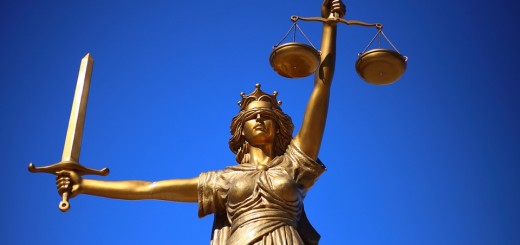“Officer Bubbles” Sues YouTube and Anonymous Commenters for Online Defamation
On September 22, 2010, Toronto Police Constable Adam Josephs launched a lawsuit in the Ontario Superior Court: Adam Josephs v. YouTube et. al (2010) CV-10-410890 (Ont. Sup. Ct.) (“Josephs v. YouTube”). In the suit, Constable Josephs sues video sharing website YouTube for $1.25 million. He seeks damages for defamation of his reputation and disclosure of the identity of the YouTube user, ThePMOCanada, whose account has since been disabled, and 23 commenters whose identities remain unknown.
Video Footage of G-20 Arrest and Parodic Cartoons Go Viral
The events leading up to Josephs’ lawsuit began this summer during the G-20 Summit in Toronto. At a protester rally, Constable Josephs, nicknamed by online detractors as “Officer Bubbles,” reprimanded a young female protester, 20-year old Courtney Winkels, for blowing bubbles in front of police officers. Following these protests, the video-taped encounter as well as a series of animated cartoons mocking Constable Josephs appeared on YouTube.
This video-taped encounter shows the officer sternly warning the protester that “if the bubble touches me, you’re going to be arrested for assault.” The protester then questioned the officer’s rationale and was subsequently taken into custody later that day by another police officer on a charge of possession of a weapon for a dangerous purpose. A series of 8 animated cartoons created using a free-animation website called “Go!Animate” subsequently surfaced, depicting a police officer named “A. Josephs” who resembled Constable Josephs. These cartoons showed “A. Josephs” arresting various individuals, including cartoon caricatures of Barack Obama and Santa Clause, as well as assaulting a news photographer without cause– all to the sound of humorous funk music playing in the background. The animated cartoon then became subject to anonymous online comments harshly criticizing Constable Josephs.
Constable Josephs alleges that these cartoon videos are “false and devastatingly defamatory,” have subjected him to “ridicule, scandal, and contempt,” and resulted in “threats of physical harm against himself and his family.” He requests remedies including an injunction preventing the defendants from publishing and continuing to publish pictures and statements relating to the “Officer Bubbles” cartoons. YouTube has since removed the animated videos and closed accounts that originally posted them; however, re-postings by other anonymous users of the offending cartoons have since surfaced online.
The Anonymity of Online Commenters
This case harkens back to last year’s online defamation case, Warman v. Wilkins-Fournier, 2009 CanLII 14054 (ON S.C.) (“Warman”) where the Ontario Superior Court of Justice, in analysing public policy, held in favour of disclosure for the plaintiffs to properly litigate against the defendant over freedom of expression. The court in Warman ordered the owners of the offending website to reveal the identities of eight anonymous online commenters, which could be the same result here in Josephs v. YouTube.
This case has sparked debate from two camps. Some argue entitlement to freedom of expression that we are all guaranteed under Section 2(b) of the Charter and which the cartoons as parodies or satires of a political event are protected forms of expression. The defendants are likely to celebrate the free-flow of information especially for political speech in a medium that hosts real-time debate. Internet dialogue is unlike traditional print and broadcast media— the latter often requiring passing higher gate-keeping standards and access to expensive production facilities for mass dissemination. On the other side, despite a potential for “libel chill,” the plaintiff is concerned that unlimited freedom of speech, particularly on the internet where moderation is applied sparingly, could open a floodgate. Cases like Josephs v. YouTube and Warman involve plaintiffs and their supporters calling for reasonable limits by anonymous online commenters who are viewed as playing too close or crossing over the legal line into defamation while hiding behind a veil of anonymity.
Online defamation is a relatively recent phenomenon; defendants are increasingly litigated for defamation occurring on message boards, blogs, websites and other internet platforms. In my view, traditional laws of defamation are mistakenly applied to online postings by categorizing internet speech alongside print and broadcast mediums. The correct approach for internet defamation should be evaluated on a case-by-case basis. The standard for internet defamation should be lower until a plaintiff can prove quantifiable injury (such as malice) beyond the scope of the trivial or fair criticism. While preventative measures such as online commenting policies and “net-etiquette” reduces the likelihood of injury, unlike other mediums, issues of publication, republication, jurisdiction and dissemination are multiplied by the breadth, speed, and anonymity of the internet. Unfortunately, unbridled enthusiasm (or criticism) can result in online defamation that is increasingly litigated in courts to identify the faces behind anonymous internet-users before damages for defamation can be attributed. Litigation also risks silencing voices that normally are unheard, uncensored expressions while attempting to balance individual reputational rights. Whatever your views on online defamation, please share your reasonable comments with us.






Join the conversation